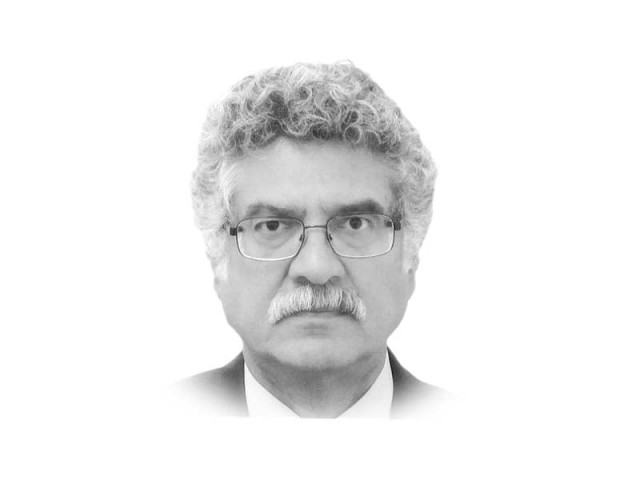Securing Pakistan’s nuclear assets
Pakistan has successfully defied American discrimination and intimidation

The writer is a former ambassador of Pakistan. The views expressed here are his own
These Indian fulminations are encouraged by the negative American narrative about the security of Pakistan’s nuclear arsenal, repeated most recently in President Trump’s South Asia policy speech. It is an open secret that the US has contingency places to de-nuclearise Pakistan ever since the start of its strategic programme. After 9/11, the American narrative has alleged the threat of terrorists or extremist “insiders” taking over Pakistan’s nuclear weapons which would have to be “neutralised” before that happens. More recently, with the development of Pakistan’s low-yield or so-called “tactical” nuclear weapons to negate India’s Cold Start doctrine, the Americans allege that these weapons, when deployed in the field, would be vulnerable to terrorist takeover or lack effective command and control. Actually, such allegations are more in response to Pakistan’s rejection of American demands to accept unilateral restraints on its strategic deterrence efforts in response to the growing Indian conventional and nuclear threat rather than any credible terrorist or insider threat.
From Pakistan’s perspective, the greater threat to its nuclear assets has always been from the US or the Indians, rather than terrorists, and has taken robust measures to protect the safety and security of these assets. Accordingly, for Pakistan ensuring nuclear security is vital for ensuring national security. Had there been a window of vulnerability, the Americans would already have tried to penetrate it.
Pakistan’s nuclear safety and security measures have been in place even before the nuclear tests of 1998. Thereafter, these have been strengthened and refined in line with emerging threats and changing technologies. Another incentive has been that of a responsible nuclear weapon state. These measures need to be better appreciated to expose the American-led canard against Pakistan. Its nuclear safety and security architecture involves legal, regulatory, institutional, operational and enforcement measures, in which there is no room for complacency.
The National Command Authority (NCA), chaired by the prime minister and including the foreign affairs, interior and finance ministers as well as the three service chiefs, is the apex command and control body that determines nuclear policy, procurement, employment and security. The Strategic Plans Division (SPD) is the executive arm and secretariat of the NCA which is also supported by the Tri-Services Strategic Forces Command. The SPD ensures the most stringent physical and technological security solutions through its dedicated security and intelligence capabilities as well as a stringent personnel reliability programme. This comprehensive approach deals with security threats. Moreover, as former Director of the SPD’s Arms Control and Disarmament Agency (ACDA), Naeem Salik, mentions in his book, Learning to Live with the Bomb, Pakistan’s nuclear weapons and delivery systems are kept geographically separate to increase safety and security. Resultantly, over the last 18 years, none of Pakistan’s nuclear facilities, whether military or civilian, have faced even a single security threat.
Pakistan has also created a comprehensive nuclear regulatory regime encompassing physical protection of nuclear materials and facilities, fissile material control and accounting, transportation security, prevention of illicit trafficking, border controls, and mechanism to deal with radiological emergencies.
The Pakistan Nuclear Regulatory Authority (PNRA), an autonomous oversight body, enforces a nuclear safety regulatory system for power reactors while the National Institute of Safety and Security (NISAS) trains personnel in nuclear safety, security and radiation mitigation. Pakistan’s Centre of Excellence for Nuclear Security Training (PCENST) imparts security training based on international best practices and standards which now includes training for foreign participants in cooperation with the IAEA. The Nuclear Emergency Management System (NEMS) is dedicated to address, respond and manage the complete spectrum of nuclear and radiological emergencies.
Pakistan has also created an export control legal regime with legislative, regulatory, administrative and enforcement measures which are consistent with multilateral export control regimes and harmonized with the guidelines of the NSG and the IAEA.
At the international level, Pakistan has fully participated with the Nuclear Security Summit process and the work of the UN’s 1540 Committee on nuclear security. It is also a party to the Convention on Physical Protection of Nuclear Materials (CPPNM), the Nuclear Safety Convention, the Convention on Early Notification of Nuclear accidents and the Conventional on assistance in case of a nuclear accident or Radiological Emergency as well as working with the Global Initiative to Combat Nuclear Terrorism (GICNT) in relevant areas.
In recognition of these measures, the IAEA Director General praised Pakistan’s nuclear safety and security machinery in 2014. Before Pakistan rejected American calls for unilateral restraint, even the Obama administration had expressed similar appreciation. Objective international scholars like Christopher Clary have also written that “threats to Pakistan’s nuclear arsenal have been exaggerated”.
Despite these facts, the negative American narrative persists. The underlying reason is that the US has not reconciled to the fact that a Muslim country like Pakistan possesses nuclear weapons even though Pakistan’s capability is exclusively for its own deterrence against India. This reason also underscores the US discrimination against Pakistan since the Indian nuclear test of 1974 when, instead of punishing the culprit, sanctions were imposed on the potential victim. Such discrimination continues with Washington’s assistance for Indian conventional and nuclear build-up and by giving India a waiver for nuclear cooperation and supporting its bid to join the NSG while refusing equal treatment for Pakistan.
Pakistan has successfully defied American discrimination and intimidation. It is also cognisant of the emerging threats posed by cyber and electronic warfare, which require effective fire-walls and countervailing measures that have been put in place as part of the full-spectrum effort for the safety and security of our strategic assets.
Published in The Express Tribune, October 13th, 2017.
Like Opinion & Editorial on Facebook, follow @ETOpEd on Twitter to receive all updates on all our daily pieces.














COMMENTS
Comments are moderated and generally will be posted if they are on-topic and not abusive.
For more information, please see our Comments FAQ